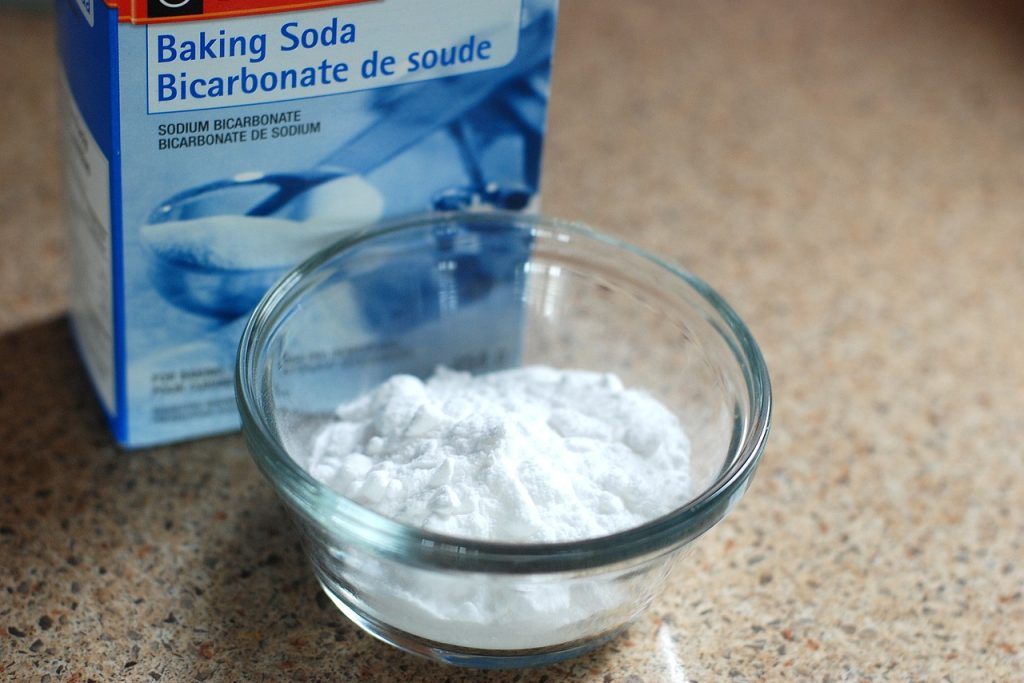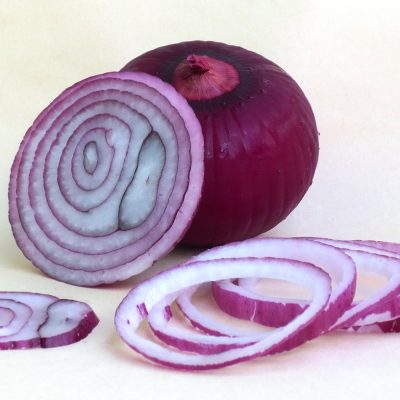Most people will experience refrigerator odour at some time in their lives, regardless of how frequently they cook, how much they care about wasting food, or how often they clean. Understandably, with work, family, school, and social obligations, your refrigerator might start to smell quite bad. When this occurs, you may need to rush through the kitchen cleaning and pay special attention to the fridge. One of the most common and simple solutions to the problem of unpleasant odours in the refrigerator is to stock it with baking soda.
Discover why baking soda in the fridge works so well, how to organize your fridge to make the most of its odour-neutralising properties, and how to keep your fridge smelling fresh.
Baking soda is simple to use, inexpensive, and widely accessible. So long as you know how long food lasts in the fridge before it begins to stink, keeping baking soda in the fridge is a fast and simple method to keep the appliance smelling fresh and clean. This is true whether you have a brand new refrigerator or one that is 15 years old.
Purpose of Storing: Baking Soda in the Fridge?
Mould, yeast and rotting food cause the majority of refrigerator odors (which could be turned into rich garden compost). Smelly, acidic, or alkaline chemicals are produced when bacteria digest food in your fridge (essential). Baking soda, or sodium bicarbonate, may convert both acidic and alkaline solid molecules into odourless sodium salts because it is “attractive” to both acidic and base particles.
Food particles in the air create odours in your refrigerator, eventually reaching your nose. Putting baking soda in the fridge prevents the fridge from smelling funky by providing the odorous particles something else to connect with, thereby neutralizing the odor.
Keep in mind that baking soda absorbs some of the minute food particles as part of the odor neutralization process, which might impair the baking soda’s flavor. So, separate some baking soda for the fridge and don’t use the same baking soda for both purposes (neutralizing smells and cooking).
Why Put Baking Soda in the Fridge?
The answer is yes. It’s also quite easy to implement into your own work. You don’t have to be creative or combine it with any other natural cleaning supplies. An unopened box of baking soda may be kept in the refrigerator for up to three months before being swapped out. You may need to change it more regularly, maybe once a month, if you feel it is losing its efficacy more rapidly. For example, if you routinely store odorous food in the fridge and notice the odor isn’t contained.
The baking soda in your fridge can go bad after a while, so a simple tip is to date the box when you first put it in the fridge.
You may also write it down in a planner or digital calendar and set up reminders to keep you on track. If you’re old school and rely on your sense of smell, you can tell when the baking soda in your refrigerator needs to be replaced.
It’s important to remember that even while baking soda is an excellent odor neutralizer, it won’t completely clear your refrigerator of all odors. A week’s worth of open bowls of raw fish or pickled onions can leave a strong odor that not even a whole box of baking soda can mask. Most likely, baking soda cleaning is required to remove the odor from the refrigerator.
Where Should I Put the Baking Sode?
Whether you have a lot of clever ways to organize the fridge or you just put items in there wherever they’ll fit, baking soda has to have its own spot. You may put a box of baking soda anywhere in the fridge, and it will help, but the ideal place to keep it so that it can absorb the most odor is near the items that are giving off the most unpleasant smells. Putrid and unpleasant aromas are more likely to be neutralized by baking soda if it is placed near the offending molecules.
It’s a good idea to have a bowl of baking soda on each shelf in the fridge, especially if it’s a big fridge or you store a lot of stinky things in there. You can also use baking soda to keep produce fresh in the crisper by sprinkling it on the bottom of the drawers and covering it with a folded paper towel.
When the baking soda in your crisper drawer starts to smell funky, it’s time to replace it, just as when you change out the boxes. If you have to toss away often expired food, and then replenish baking soda in your fridge; you may want to investigate the optimal temperature for a refrigerator. The fridge may not be getting cold enough, resulting in fresh food spoiling too quickly.
Quantity: To Put Baking Soda in the Fridge?
The distribution of baking soda in the refrigerator is more important than the amount of baking soda used. You’ve practically squandered a gallon of baking soda if you fill an old milk carton and leave just a one-inch space exposed.
Give baking soda as much exposed surface area as possible to increase its odour-neutralising efficiency. Pouring at least a cup of baking soda into a bowl or spreading it out over a large plate will provide the best results. This releases a large number of sodium bicarbonate crystals into the air, where they may effectively absorb and neutralize smells.
Remember that the size of your refrigerator affects how much baking soda you’ll need. Baking soda use is proportional to the amount of food stored in the refrigerator; hence, larger refrigerators with extensive food options would need more baking soda than smaller refrigerators or mini fridges.
Is Baking Soda Safe to Use in the Freezer?
Yes, definitely! There is no difference in effectiveness between using baking soda in the fridge or freezer. You may help keep ice and other things in the freezer smelling and tasting fresh by keeping a box of baking soda in there to absorb any lingering aromas.
Storing baking soda in the refrigerator without taking up significant space on a plate or dish; provided the box is opened, and the aperture is sufficiently big. Some baking soda containers are made with huge cutouts that let smells escape – while preventing any of the baking soda from leaking out.
Where Else Can Baking Soda Be Used in the Kitchen?
This seemingly innocuous pantry staple is an absolute need in every home. Baking soda puts in long hours in the kitchen, and it doesn’t simply deodorize the fridge and freezer. It’s also effective as a homemade refrigerator and freezer cleanser. If the stains and smells inside the refrigerator are very tenacious, use baking soda and water to clean them down. The versatility of baking soda makes it a useful item to keep on hand. Baking soda is convenient since it is inexpensive and small enough to fit under a kitchen sink until needed.
Baking Soda Substitutes: 7 Clever Alternatives
We understand that you may wish to try other natural alternatives and deodorizer solutions, even though good old-fashioned baking soda is like Mary Poppins in that it is virtually perfect in every aspect. Some possible deodorizers are listed below.
1. Onions
Yellow onions, which many people have found to be effective in deodorizing refrigerators, (shower onion) bathrooms, and basements, are a common go-to. This onion’s high sulphur content gives it a yellow skin that MUST not be peeled or sliced. It can be used as a substitute for baking soda because of its high-temperature resistance.
2. Sodium Chloride (Salt) and Potassium Bicarbonate
Although it is more often used as a nutritional supplement, potassium bicarbonate may be utilized as a safe and efficient baking soda alternative. Because potassium bicarbonate is salt-free, it’s a great alternative for those watching its salt consumption. It is the perfect replacement for baking soda in any recipe that calls for it. But since it has less salt, the flavour of your food may be affected. However, if you’re not watching your sodium consumption, you might increase the amount of salt in the recipe to compensate for the taste shift. Each recipe calls for a different quantity of salt, so you’ll have to play around with it until you find the sweet spot. A good starting point is 1/4 to 1/2 teaspoon of salt for every teaspoon of potassium bicarbonate.
3. Coffee
Dried coffee grounds sprinkled in a tiny cup and placed near the smelliest objects in the fridge will help decrease fridge stink. However, they won’t work as well as baking soda. Be aware that the coffee process leaves a subtle coffee aroma, and the grounds may need to be replaced as often as once a week.
4. Baker’s Ammonia
Another convenient alternative to baking soda is ammonium carbonate, sometimes known as baker’s ammonia. It’s significant since it was a common chemical leavening agent in 13th-century Europe.
The usage of baking powder and baking soda eventually supplanted its use, although it is still infrequently used today. Some baked items, such as thin, crisp cookies or crackers, benefit from the distinctive crispiness that baker’s ammonia adds to the dough. Baker’s ammonia reacts with heat and acid to form carbon dioxide and ammonia. The ammonia may produce a strong and unpleasant odour. Because of the delicate nature of light, airy baked products, ammonia has little chance of reacting poorly with the final product. It’s possible that the ammonia in baked items with a dense crumb, like cake or muffins, won’t dissipate and will leave a lingering, disagreeable aroma.
5. Vinegar
Like baking soda, vinegar has various uses and may be used in a wide variety of recipes. It is used for cleaning, washing fruits and vegetables, and even eliminating aromas in the refrigerator. If you put a cup of vinegar near the offending source, the smell will eventually fade after a few hours as the vinegar absorbs the odours. White vinegar is what you want, not cider, balsamic, wine, or any other taste. Moreover, it would be best if you had new vinegar every few days.
6. Egg Whites
Whipping egg whites may provide structure and leavening powers to your dish. Although they are more effective when used as a baking powder replacement, they may be used in place of baking soda if necessary. Tips for Substituting – Foam and stiffen egg whites by beating them. Use a liquid measuring cup to get the right quantity of whites to replace the liquid called for in the recipe. If you have two tablespoons of egg whites, take out two tablespoons of liquid, like milk.
7. Activated Charcoal
It is a pure carbon compound that is often used to filter the water in fish tanks and is thus widely available online or even at pet stores.
You may buy activated charcoal in powder or pellet form and place a cupful in your refrigerator near the source of the stink. Alternatively, you can get activated charcoal cartridges that can be placed in your refrigerator as your closet, vehicle, bathroom, and even near your litter box.
Tip: never to put these items back in the fridge now that it’s clean and fresh.
Bottom Line
Despite the fact that baking soda is nearly perfect in every aspect, we understand that you may want to try other natural alternatives and deodorizer solutions.
Also read:





